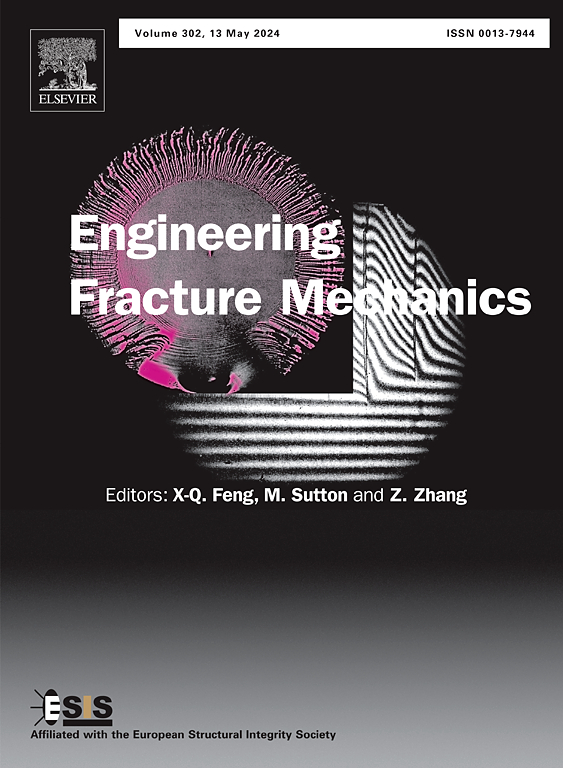Utilizing controlled hydrogen-assisted pre-cracking to assess the fracture toughness of high-strength steels
IF 4.7
2区 工程技术
Q1 MECHANICS
引用次数: 0
Abstract
The controlled initiation of detectable cracks is pivotal in fracture mechanics investigations. Typically, pre-notched specimens are utilized, and fatigue cracks are induced at the notch root. In the specific case of circumferentially notched tensile (CNT) specimens, fatigue cracks originate from rotating bending. Subsequently, the fatigue pre-cracked specimens undergo tensional fracture, and fracture toughness is ascertained based on the crack length and fracture stress. However, a notable portion of fatigue cracks initiated in this manner exhibits non-uniform radial lengths, leading to a ligament eccentricity relative to the fracture surface centre. Consequently, accounting for bending stresses alongside tensile stresses becomes imperative, which makes fracture mechanics testing methods more complex. In a previous study, the authors demonstrated that hydrogen-assisted cracking (HAC) can yield highly symmetric circumferential cracks in CNT specimens of high-strength quenched-tempered steel. In this context, the consistent circumferential formation of the crack, as well as the radial crack length are regulated by both the duration of hydrogen pre-charging and the subsequently applied preload. This paper elucidates the utility of hydrogen-induced circumferential cracks for evaluating fracture toughness. Both the fracture toughness in the presence of hydrogen () and the fracture toughness without the influence of hydrogen () are assessed reliably. For the latter, a hydrogen extraction heat treatment is carried out and the influence of the extraction temperature is discussed. By following this method, fracture toughness of CNT specimens can be reliably determined with simplicity, eliminating the need to consider bending stresses. This significantly enhances the usability of CNT specimens in fracture mechanics testing, which is why hydrogen-assisted pre-cracking is seen as a promising alternative to the established fatigue pre-cracking.
求助全文
约1分钟内获得全文
求助全文
来源期刊
CiteScore
8.70
自引率
13.00%
发文量
606
审稿时长
74 days
期刊介绍:
EFM covers a broad range of topics in fracture mechanics to be of interest and use to both researchers and practitioners. Contributions are welcome which address the fracture behavior of conventional engineering material systems as well as newly emerging material systems. Contributions on developments in the areas of mechanics and materials science strongly related to fracture mechanics are also welcome. Papers on fatigue are welcome if they treat the fatigue process using the methods of fracture mechanics.

 求助内容:
求助内容: 应助结果提醒方式:
应助结果提醒方式:


